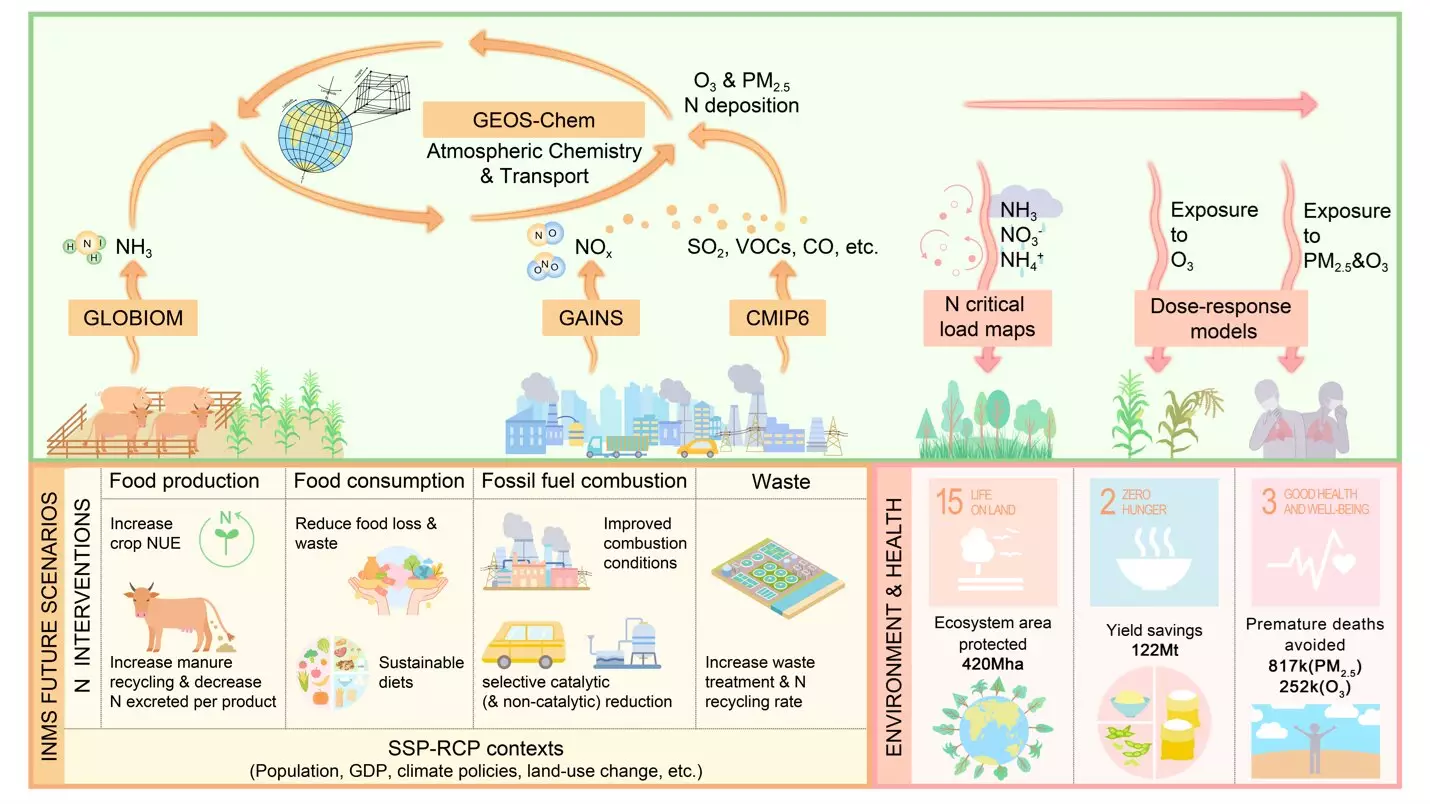The nitrogen cycle is a fundamental biogeochemical process vital for sustaining ecosystems and supporting agriculture. However, humanity’s industrial activities, particularly those associated with agriculture and fossil fuel combustion, have severely disrupted this cycle, leading to what is identified as a nitrogen pollution crisis. With increasing demands for food and energy due to a growing global population, nitrogen pollutants such as ammonia (NH3), nitrogen oxides (NOx), and nitrous oxide (N2O) are released into the atmosphere, causing grave environmental and health consequences.
Research suggests that the nitrogen cycle is one of the most overstressed natural systems, primarily from anthropogenic sources. These pollutants contribute not only to air quality deterioration but also adversely impact crop productivity and various ecosystems. As pollution levels rise, so does the risk to human health and ecosystem integrity, leading to a pressing need for effective mitigation strategies.
Despite recognition of the nitrogen pollution issue, there exists a significant gap in our understanding and response strategies. Current research predominantly focuses on tracking nitrogen flows through different environmental compartments—air, soil, and water—yet fails to delve deep into the biogeochemical transformations that underlie these processes. In contrast, Earth science models typically evaluate these transformations in isolation, neglecting their interconnectedness.
This disconnect can hinder the development of comprehensive policies aimed at tackling nitrogen pollution. To bridge this gap, an international research group has initiated a multidisciplinary approach, synthesizing insights from diverse fields of study. Their findings underscore the urgent need for integrated nitrogen management strategies that encompass various environmental mediums, providing a holistic understanding of nitrogen’s impacts.
The research team’s recent study published in Science Advances presents a potentially transformative pathway for mitigating nitrogen pollution. By assessing various nitrogen interventions—ranging from optimizing agricultural practices to enhancing combustion efficiency in industries—the study highlights the far-reaching benefits these measures could yield. Notably, improvements in fuel combustion techniques and better nitrogen usage in agriculture can significantly lower emissions of ammonia and nitrogen oxides.
Quantitatively, the study projects that by 2050, ambitious nitrogen interventions could lead to remarkable emission reductions: a 40% decrease in ammonia and a 52% cut in nitrogen oxides since 2015 levels. Such reductions could prevent approximately 817,000 premature deaths attributable to air pollution while simultaneously boosting agricultural productivity through enhanced crop yields and ecosystem health.
A critical insight from the study is its geographical focus. The expected benefits of nitrogen management interventions are anticipated to be most pronounced in Africa and Asia. These regions, which are prone to the compounded effects of pollution and growing populations, stand to gain enormously from the adoption of these strategies. By addressing nitrogen emissions through improved agricultural practices and waste reduction, not only can air quality be improved, but public health and food security can also be significantly enhanced.
Moreover, the study illustrates that the advantages of these interventions will continue to amplify over time. As the population grows, so will the health benefits derived from cleaner air, particularly in developing regions. Thus, implementing these strategies aligns not only with environmental sustainability but also contributes to social equity and economic resilience.
The results from this extensive research reinforce the notion that nitrogen interventions are critical to achieving several Sustainable Development Goals (SDGs). These include promoting Good Health and Well-being (SDG3), addressing Zero Hunger (SDG2), encouraging Responsible Consumption and Production (SDG12), and protecting Life on Land (SDG15).
Understanding these linkages allows policymakers to integrate nitrogen management more effectively into broader environmental strategies, leading to tailored solutions that account for regional differences and priorities.
As we confront the multifaceted challenges of nitrogen pollution, a commitment to interdisciplinary research and collaboration is essential. The insights gleaned from this study provide a roadmap for developing comprehensive nitrogen management strategies that can effectively mitigate harm to public health and the environment while promoting sustainable development across the globe.



Leave a Reply